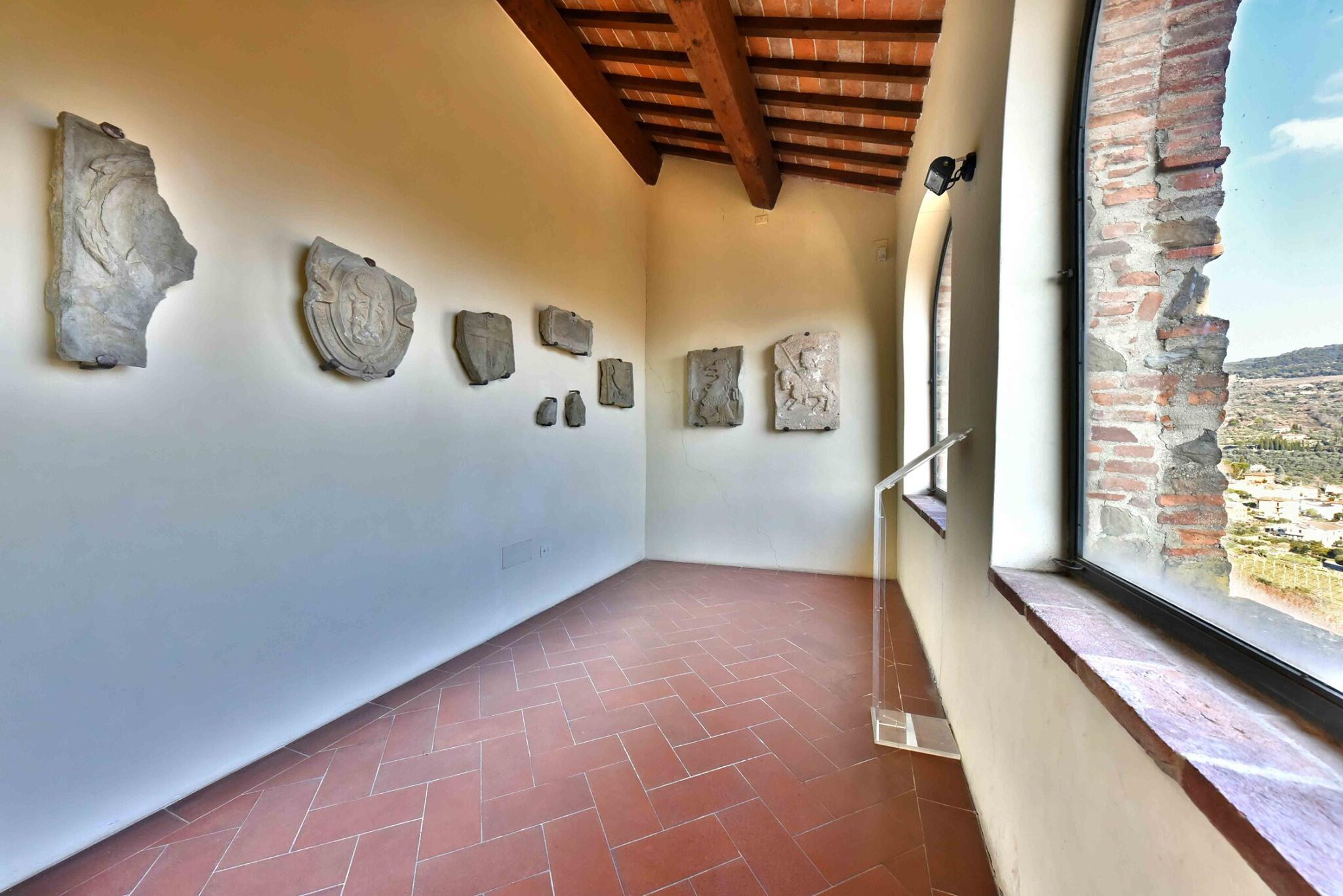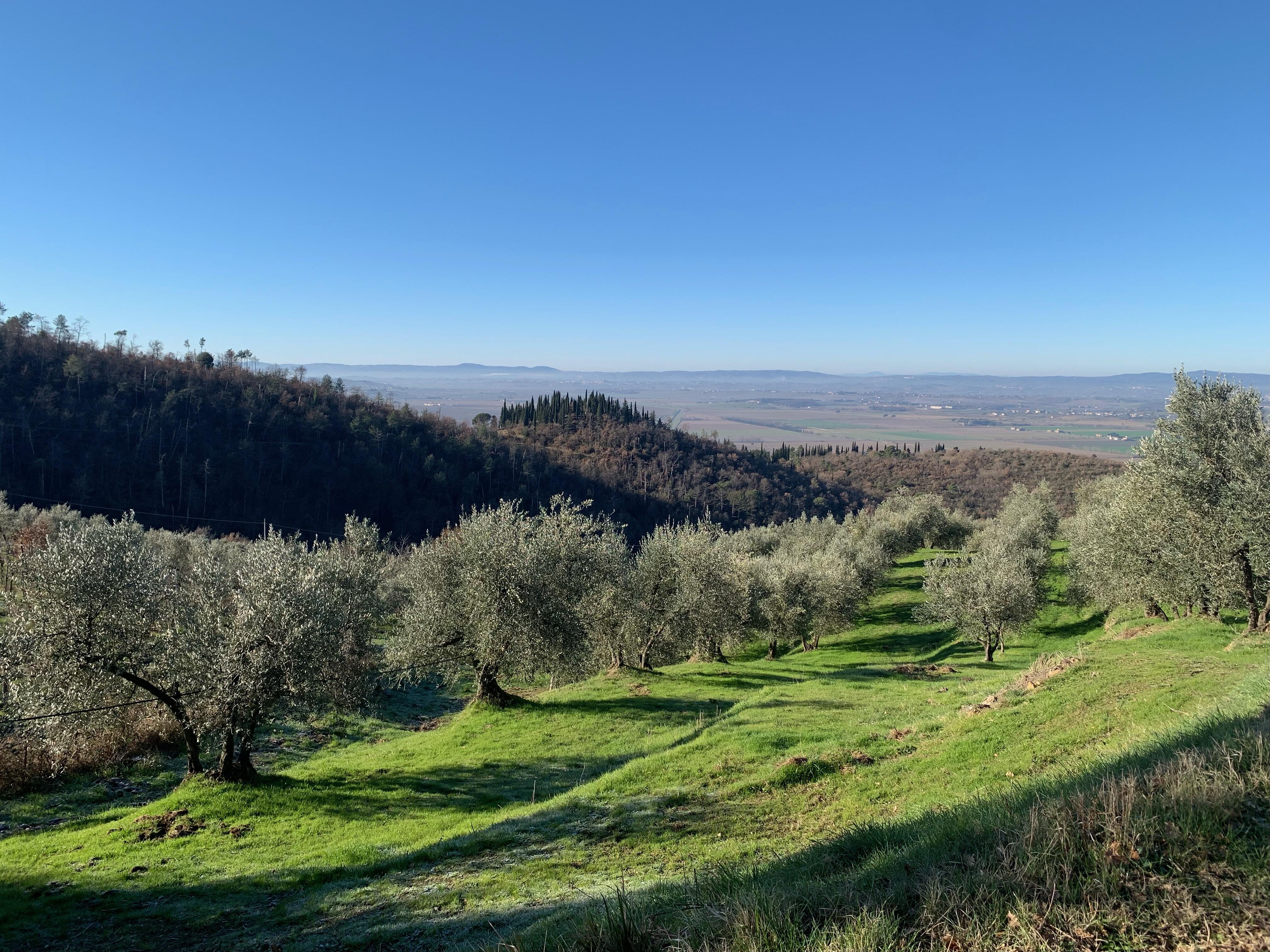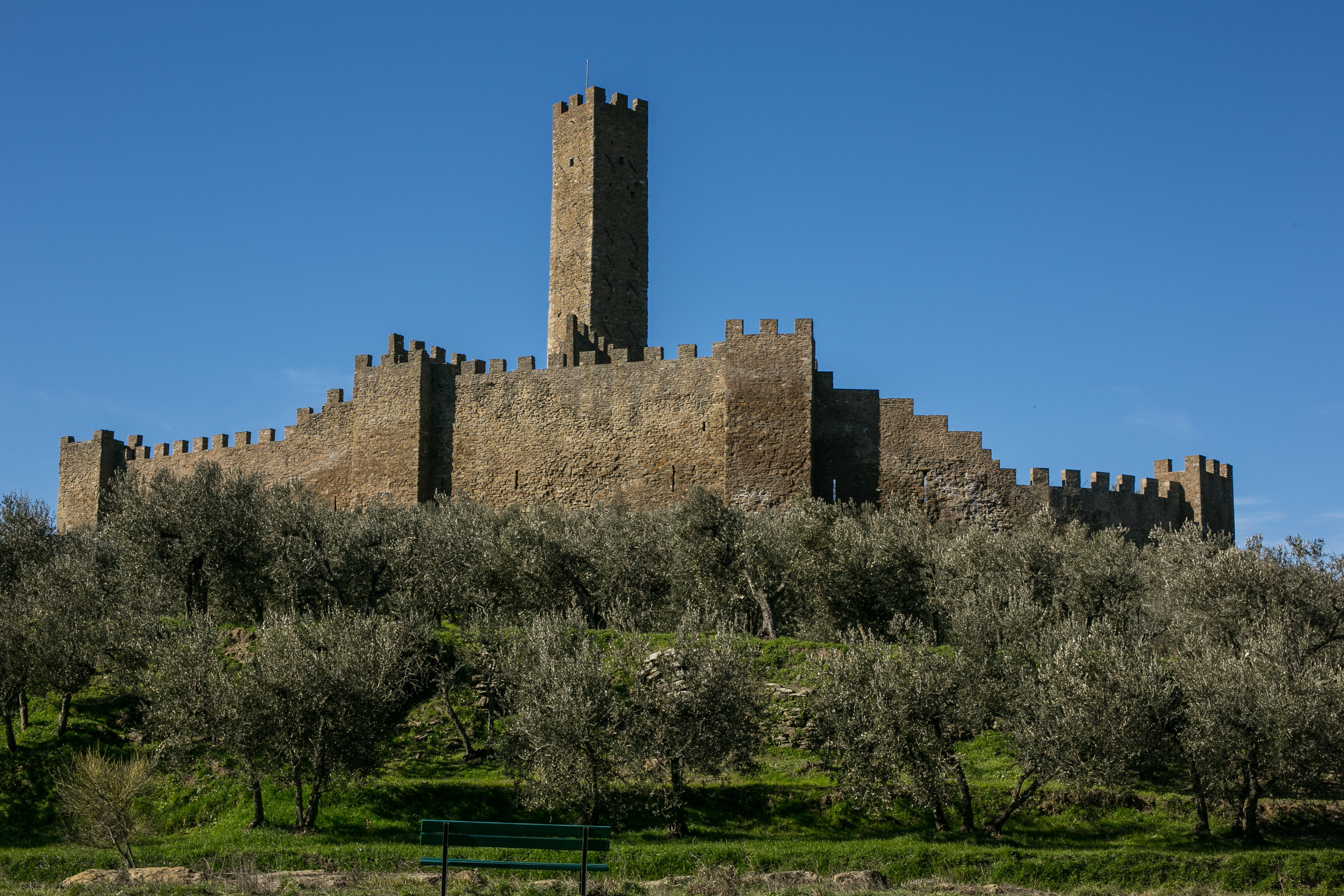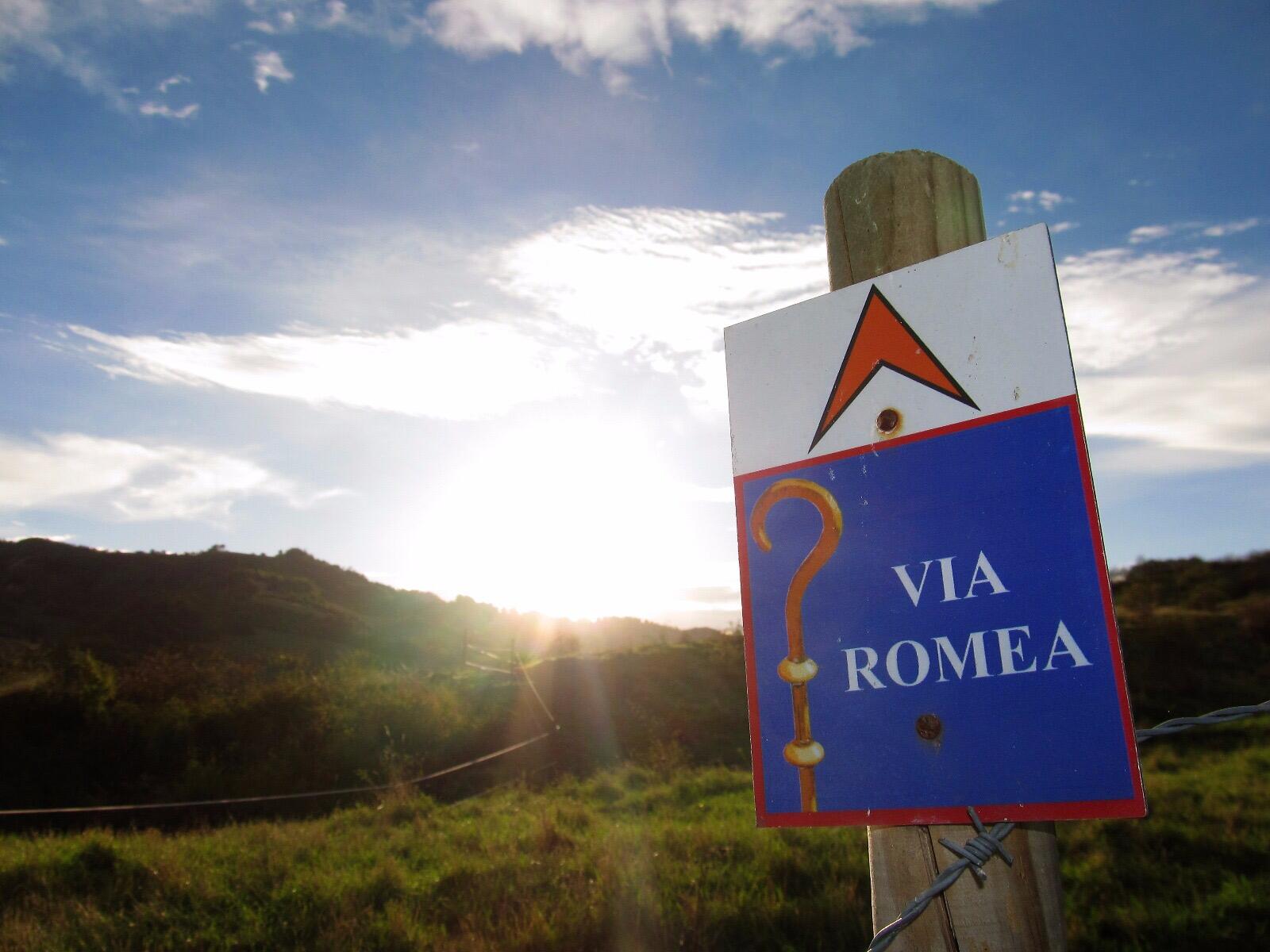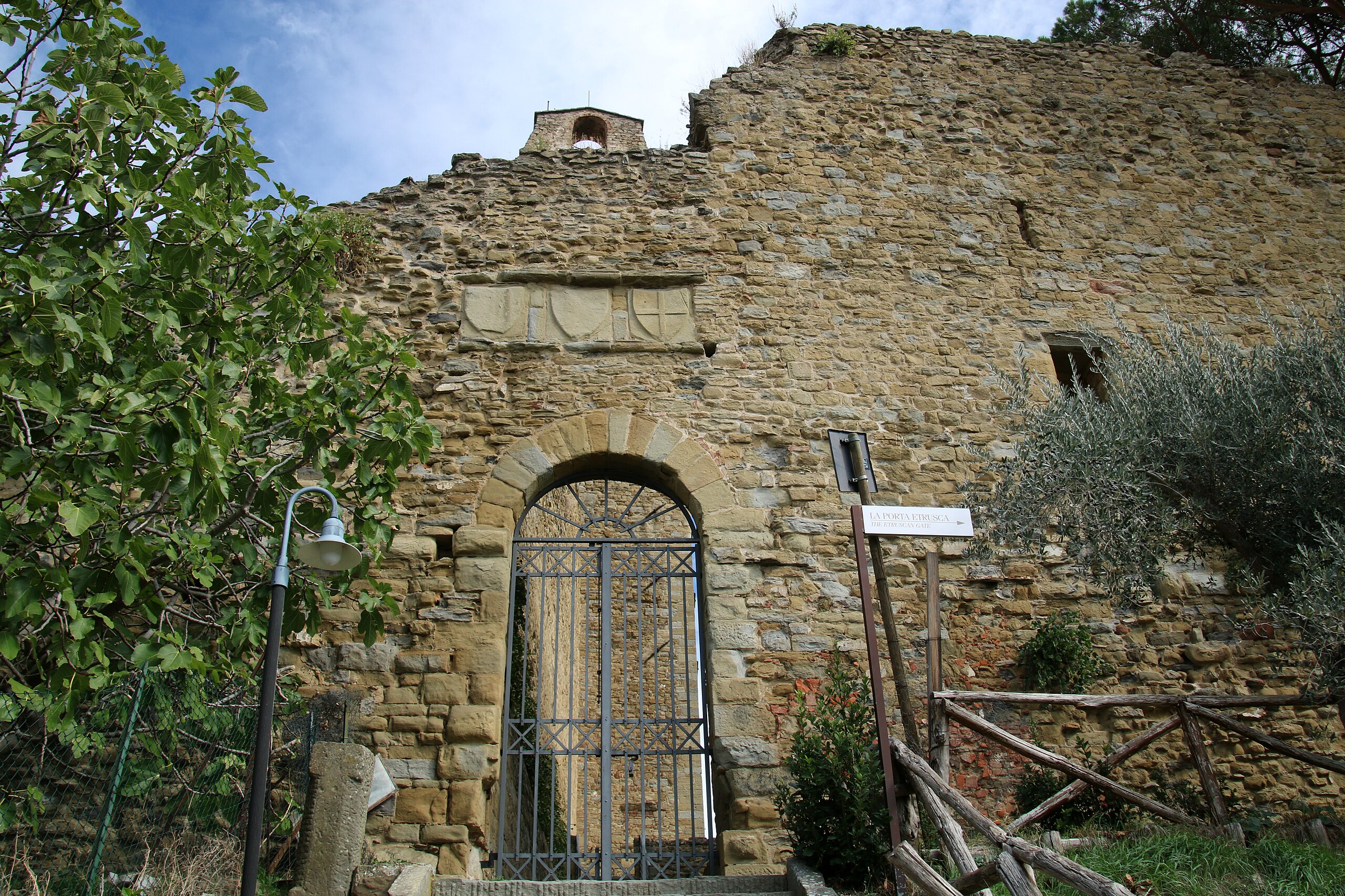POINT OF INTEREST
MONUMENTS
Porta Romana
Anciently called Porta San Michele or Cortonese, Porta Romana represents the southern access to the city
Anciently called Porta San Michele or Cortonese, Porta Romana represents the southern entrance to the city. The original structure dates back to the 14th century but the gate was almost completely destroyed by the bombings of 1944 and rebuilt after the war, trying to respect its original forms.
Above the pointed arch, a niche houses the terracotta statue depicting Saint Michael the Archangel, patron saint of the city, a copy of the original polychrome wooden sculpture, made in the first decades of the 14th century and now preserved in the Pinacoteca Comunale.
The original statue, also hit by the bombing, was found miraculously intact among the rubble, a sign long interpreted as a miracle by the citizens of Castiglione.
In ancient times, four coats of arms were placed above the gate, depicted in a manuscript by the local historian Giuseppe Ghizzi: one recalled the papal domination, another that of Perugia, while the other two are difficult to read.
Images that tell a story
Welcome to our gallery: a collection of images that tell moments, emotions, and details that often escape words. Each shot is a fragment of history, a memory to share, a perspective to explore. Browse and let yourself be inspired.
Contacts
Below are our contacts through which you can reach us:
Share the page
Below are our references through which you can contact us:


 ITA
ITA

